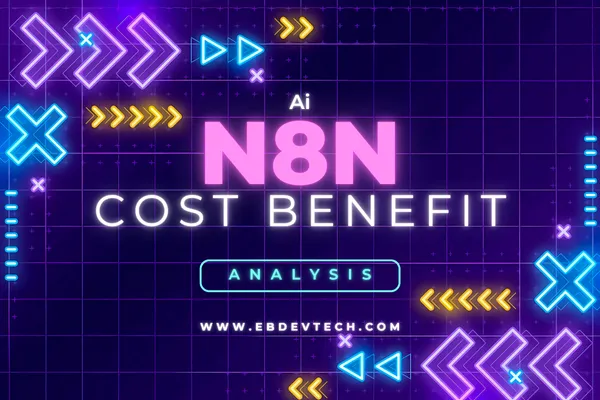
Selecting the Right n8n Plan: Cost and Licensing Essentials for SMBs - Part 2
n8n Cost Structure and Licensing Options
Cost-Benefit Analysis: Quantitative Data Tables
Industry-Specific Examples and Use Cases
Retail: Automated Customer Support with Multi-Agent Teams
Professional Services: Intelligent Document Summarization
Healthcare: Smart Appointment Scheduling
Quantitative ROI Scenarios for Small to Medium-Sized Businesses
E-commerce Store (Annual Revenue: $2M)
Legal Boutique (Annual Revenue: $500K)
Choosing the optimal n8n deployment model is a critical first step for any small to medium-sized business planning to adopt agentic AI workflows. In this post, we’ll break down n8n’s four licensing options.
n8n Cost Structure and Licensing Options
n8n offers three primary ways to deploy:
Self-Hosted Community Edition:
Cost: Free software license; hosting cost depends on server provider ($5–$10/month for a basic VPS).
Scalability: Virtually unlimited executions, limited only by server resources.
Support: Community forums, GitHub issues.
Cloud Starter Plan:
Cost: $24/month for 2,500 workflow executions, unlimited steps, 5 active workflows, unlimited users.
Usage: Suited for proof-of-concepts and small teams.
Cloud Pro Plan:
Cost: $60/month for 10,000 executions, 15 active workflows, 3 shared projects, admin roles, global variables, workflow history, execution search, debugger.
Usage: Growing SMBs with moderate automation volume.
Enterprise Plan:
Cost: Custom pricing (often starting around $10,000–$20,000/year for 10+ active workflows in high-security environments, per industry anecdote).
Usage: Large deployments requiring SSO/SAML, private networking, and extended support.
Crucially, AI agentic workflows often incur additional costs beyond n8n itself; this could be in the form of LLM inference fees. For example, calling OpenAI’s GPT-4 might cost $0.03 per 1,000 tokens for prompts and $0.06 per 1,000 tokens for completions. If a typical agentic workflow exchanges 10,000 tokens per execution, that’s approximately $0.90 per run. For 2,500 executions in a month, AI inference costs could reach $2,250, far outweighing the $22.50 subscription.
However, n8n supports model routing: low-cost tasks can be directed to smaller open-source models (e.g., Llama-2, which can run locally), while complex reasoning uses premium models. By integrating local containers for open-source LLMs via Hugging Face or Ollama, SMBs can reduce inference costs by up to 80% for routine tasks (e.g., simple classification, summarization).
Other additional costs can involve: infrastructure costs (server, domain, or database), maintenance (security, troubleshooting, and scaling), external services (API costs, or other tools).
Cost-Benefit Analysis: Quantitative Data Tables
Below is a comparative table of three representative AI solutions: (1) n8n self-hosted with open-source models, (2) n8n Cloud Pro with hybrid model routing, and (3) a legacy code-first approach using custom Python scripts and direct LLM API calls. All figures are representative estimates for a mid-sized SMB in the U.S. with an average labor cost of $36.06/hour.

n8n Cost Benefit analysis example: This table illustrates that n8n’s AI-native capabilities and tiered pricing enable SMBs to realize positive ROI quickly, whereas building custom code-first pipelines often overshoots budgets, especially if reliant solely on premium models.
n8n Self-Hosted + OSS Models: Low platform cost ($10) but higher DevOps effort (20 hours) to maintain servers and tune open-source models. Monthly LLM inference on small VPS GPUs estimated at $200. Generates an estimated 50 hours of productivity gains ($871.80 net benefit).
n8n Cloud Pro + Hybrid Routing: Higher recurring fee ($56) offset by reduced DevOps overhead (10 hours/month). By directing simple tasks to open-source and reserving GPT-4 for mission-critical steps, the inference cost sits around $600. Achieves 60 hours saved, netting $1,147.
Custom Python + Direct API: Although no platform licensing, the absence of a visual orchestrator increases development time (40 hours/month). Direct GPT-4 calls for all tasks ($1,800) drive costs higher. Even with 70 hours saved, the ROI is negative.
Industry-Specific Examples and Use Cases
Retail: Automated Customer Support with Multi-Agent Teams
Scenario:
An online retailer receives 500 daily customer inquiries across email and chat. A single agent processes incoming text, classifies “refund,” “product inquiry,” or “order status,” and either responds with a templated answer or escalates to a human if the query is complex. A secondary agent analyzes past refund requests to identify frequent issues and triggers proactive restocking alerts.
Benefits:
24/7 response coverage, reducing average resolution time from 8 hours to 30 minutes.
Automated inventory alerts cut stockouts by 25%.
Human agents focus on exception handling rather than rote responses, improving customer satisfaction scores by 15%.
n8n Implementation:
Webhook Trigger: Incoming inquiries feed into n8n.
Classification Agent: GPT-4 node classifies intent.
Response Agent: For simple intents, GPT-4 drafts replies; an “Email Send” node dispatches responses.
Escalation Node: If confidence <75%, route to human ticket queue.
Inventory Analysis Agent: A scheduled cron trigger daily retrieves sales data, forecasts demand via an LLM analysis, and posts alerts to Slack.
Do you have a similar number of inquiries?
Professional Services: Intelligent Document Summarization
Scenario:
A small legal firm needs to review hundreds of pages of discovery documents each week. Using n8n, they build an agent that ingests uploaded PDFs, extracts text via OCR, runs an LLM summarization, and organizes key points into a structured database. A follow-up agent cross-checks case precedents and highlights discrepancies.
Benefits:
Lawyers save ~20 hours per week, reallocating time to client consultations.
Document review accuracy improves by 10% due to consistent summarization protocols.
Faster turnaround helps the firm take on 15% more cases annually.
n8n Implementation:
File Upload Trigger: New PDFs in a shared folder kick off workflows.
OCR Node: Uses Tesseract or cloud OCR to convert PDFs to text.
Summarization Agent: GPT-4 node generates concise briefs.
Database Update: Summaries stored in a Postgres cluster.
Precedent Analysis Agent: Another LLM scans a legal database and flags conflicting rulings.
Can we save some time for your team?
Healthcare: Smart Appointment Scheduling
Scenario:
A community clinic processes 1,000 appointment requests monthly. An agentic workflow uses an AI agent to interpret patient intents (e.g., “new patient,” “routine check-up,” “urgent care”) from free-form messages, match to available slots, and confirm with patients via SMS (or any other trigger). Critical requests (e.g., chest pain) are escalated immediately to an on-call nurse.
Benefits:
Appointment scheduling latency drops from 24 hours to under 2 hours.
No-show rate decreases by 12% due to automated reminders.
Staff only handle complex exceptions, reducing scheduling workload by 60%.
n8n Implementation:
SMS Trigger: Incoming messages start the workflow.
Intent Agent: LLM classifies urgency and appointment type.
Calendar Node: Checks availability via Google Calendar API.
Confirmation Node: Sends SMS confirmations or defers to staff for urgent cases.
Reminder Agent: Scheduled SMS reminders 48 and 24 hours before appointments.
Can we escalate only critical requests for your clinic?
Quantitative ROI Scenarios for Small to Medium-Sized Businesses
To illustrate how n8n’s agentic AI workflows can translate into real dollar savings, consider three hypothetical SMB profiles:
E-commerce Store (Annual Revenue: $2M)
Manual Customer Support: $30,000/year (1 full-time equivalent, 20 hours/week).
n8n Implementation: 50% of customer inquiries resolved automatically.
Savings: $15,000/year in labor; $5,000/year reduction in support software spend.
Cost: $56/month subscription + $1,200/year LLM inference fees (optimized routing).
Net Benefit: $15,000 + $5,000 – ($672 + $1,200) = $18,128.
Legal Boutique (Annual Revenue: $500K)
Manual Document Summaries: $40,000/year (2 paralegals, 20 hours/week each).
n8n Implementation: Automate 75% of document summarization and precedent checks.
Savings: $30,000/year.
Cost: $10/month VPS + $150/month LLM inference + 5 hours/month DevOps = $3,000/year.
Net Benefit: $30,000 – $3,000 = $27,000.
Regional Clinic (Annual Revenue: $1M)
Manual Scheduling: $60,000/year (2 front-desk staff, 40 hours/week each).
n8n Implementation: Automate 80% of routine appointment bookings.
Savings: $48,000/year.
Cost: $56/month subscription + $600/year LLM inference fees + 10 hours/month DevOps ($4,327) = $5,299/year.
Net Benefit: $48,000 – $5,299 = $42,701.
These scenarios demonstrate that even modest investments in n8n agentic workflows can yield ROI figures ranging from 5x to 10x within the first year. By carefully selecting high-volume, repetitive tasks and leveraging hybrid model routing, SMBs can minimize incremental costs (both licensing and inference) while capturing substantial labor savings.
Actionable Recommendations Summary
1. Pilot Strategically: Begin with a self-hosted pilot on processes where labor costs are highest.
2. Optimize Model Usage: Classify tasks by complexity and route accordingly to balance performance and cost.
3. Embed Human Oversight: Use human-in-the-loop nodes to ensure compliance, maintain context, and build trust in automated outputs.
4. Train Business Users: Empower non-technical staff to build and iterate on workflows, fostering a culture of continuous improvement.
5. Monitor and Scale: Regularly review KPI dashboards, adjust workflows based on feedback, and upgrade subscription plans when execution volumes outgrow self-hosting or Starter limits.
With n8n’s cost structure and licensing options clearly mapped out, you can confidently select the plan that fits your technical capacity and financial constraints. In Part 1 of this series, we’ll move beyond pricing to demonstrate real-world ROI with industry specific AI applications, implementation analysis and practical implementation strategies.


